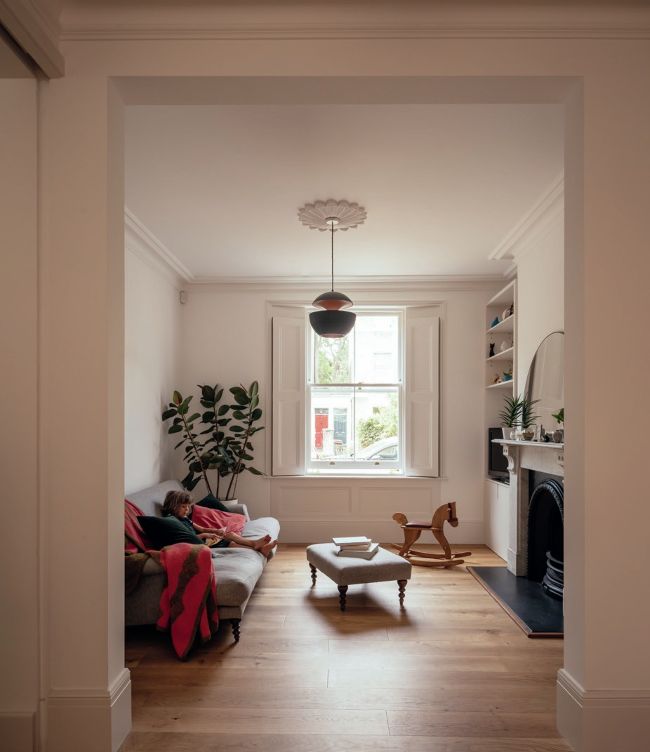RETROFITTING INSULATION
Alan Tierney explains why it’s important to understand the building fabric of your home before taking steps to improve its thermal performance, and summarises the best strategies for success

As part of the renovation and extension of the ground floor of this Victorian property, Whittaker Parsons (
whittakerparsons.com) developed a strategy to improve its thermal performance. Insulation made from recycled coffee bean bags was fitted in the existing ground-floor structure, laid above an airtight membrane to prevent heat escaping. Gutex (
gutex.co.uk) Thermoflex woodfibre insulation was installed in the walls
JIM STEPHENSON
In the drive to minimise the effects of climate change and reduce energy bills, the thermal performance of domestic properties is becoming increasingly important. While energy efficiency standards for new build homes are improving, the fact remains that most existing and older houses would still benefit from upgrades to their thermal fabric.
The most important factor in how effectively a building is able to retain heat is whether it can be consistently dry – however, there are many properties that have some serious failings in this area. The next potential issue to consider is airtightness – though this is often neglected, too. Improvements to this aspect of a dwelling’s performance are relatively simple and low cost to carry out, yielding substantial overall benefits. Once these two matters have been properly addressed, it’s time to look at developing a suitable strategy for retrofitting additional insulation.
What type of property do you have?
Your home is likely to fall into one of three general groups – and it’s important to bear in mind that the appropriate insulation solution for each is quite different. The first category is old, traditionally constructed houses built before 1918. The second bracket encompasses mid-20th century properties, erected roughly between 1919 and the 1990s. The final type is for modern dwellings.